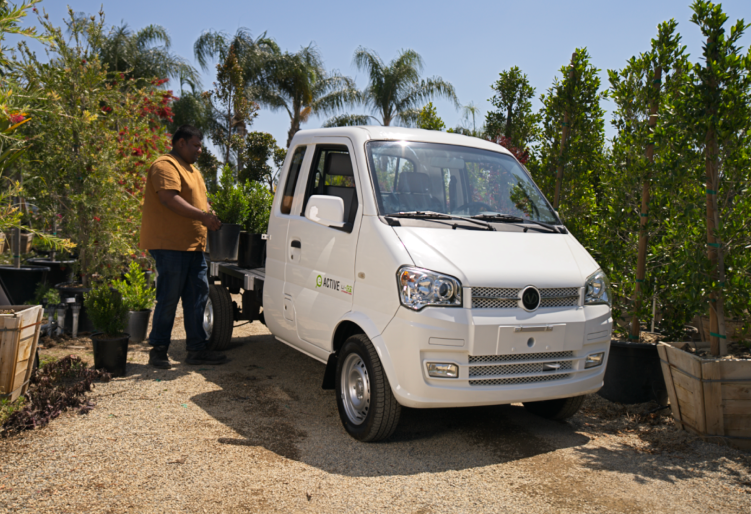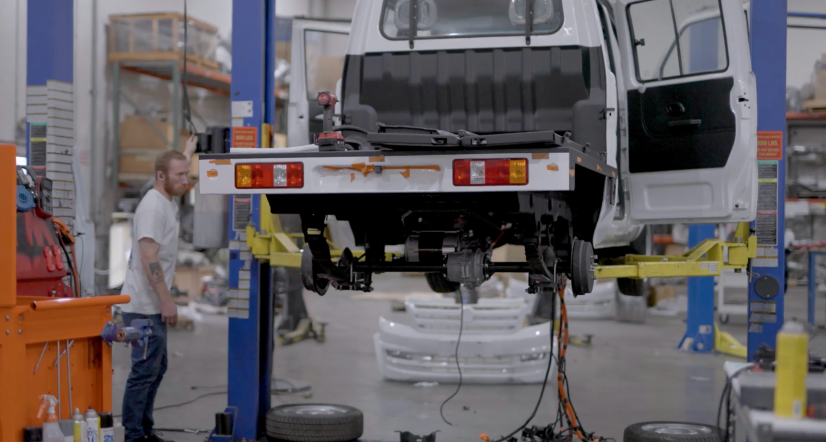What’s Next for Low-Speed Vehicles? Features and Beyond

From airports to campuses, the low-speed vehicle (LSV) is becoming a cornerstone of modern fleet operations. Once confined to golf courses and gated communities, today’s low-speed vehicles are evolving into connected, data-rich assets capable of serving commercial fleets as well as public-sector operations.
Over the next five years, new technologies—from AI-driven diagnostics to energy-aware charging—will redefine how fleets deploy, manage, and measure the performance of every gas or electric utility vehicle.
Why the Next Five Years Matter
The global LSV market is projected to grow at nearly 9% annually through 2032,1 driven largely by corporate sustainability mandates and the push toward fleet electrification. Defined under FMVSS 500 as street-legal vehicles with a maximum speed of 20-25 mph,2 these compact platforms balance safety and efficiency for short-distance routes.
For fleet managers, this means measurable uptime gains and a lower total cost of ownership compared with conventional light trucks.
Powertrain Road Map
Electrification remains the foundation of LSV innovation. Manufacturers are moving toward lithium-iron-phosphate (LFP) battery chemistries that offer greater thermal stability and longer life cycles. Smart battery-management systems now monitor state of charge and health in real time.
Regenerative braking and improved driveline efficiency extend range and reduce wear. In the next generation of low-speed electric vehicles, AI-enhanced BMS platforms will learn from usage patterns to optimize charge depth and thermal performance for longer component life.
AI-Ready, Connected Fleets

Connectivity is transforming every utility vehicle into a mobile data node. Key data can be streamed directly to fleet dashboards through API-ready integrations. Over-the-air updates can add safety functions or push firmware fixes without removing the vehicle from service.
Artificial intelligence is taking this further. Predictive maintenance algorithms track vibration and current draw to flag overheating or other issues before failures occur. Driver-assist modules coach operators on braking habits and route efficiency. The result is a connected LSV ecosystem that supports higher uptime and smarter deployment decisions.
Operator Safety and Visibility
Safety enhancements are accelerating alongside connectivity. Hybrid/electric LSVs must meet FMVSS 141 minimum sound requirements,3 and many also add adaptive lighting and high-visibility markings. In controlled environments such as warehouses and airports, AI-driven proximity sensors detect pedestrians and cyclists, filtering false alerts while ensuring real-time warnings.
These advancements give managers better oversight without sacrificing the quiet, low-impact operation that defines electric low-speed vehicles.
Charging and Energy Planning

Charging strategy is becoming a core component of fleet management. Many operators rely on Level 1 outlets for overnight charging, but scalable fleets are adopting Level 2 systems to support quick turns and shift operations. AI-based load forecasting allows facilities to orchestrate charging cycles, preventing peak-rate spikes and integrating renewable energy sources.
For multi-site organizations, these systems create a coordinated charging network that significantly reduces overall energy cost per mile traveled.
Work-Ready Ergonomics and Upfits
Modern golf course utility vehicles and commercial LSVs now rival light trucks in capability. Enclosed cabs with HVAC provide year-round comfort for grounds crews and maintenance teams. Modular cargo systems can accommodate tool racks, refuse hoppers, man-lift platforms, and similar performance-enhancing options. Cleanable interiors and lockable storage meet hygiene and security needs across healthcare and hospitality operations.
This adaptability means a single electric utility vehicle line can serve dozens of applications across an organization.
Autonomy in Geo-Fenced Environments

Full autonomy remains isn’t yet possible for on-road traffic, but within campuses and controlled facilities, AI-enabled features are advancing quickly. Low-speed convoying and automated docking are already emerging in pilot programs. Geo-fenced routing ensures vehicles remain within approved areas while remote operators maintain oversight.
These applications highlight the next frontier for LSV fleets—safe, semi-autonomous logistics in specific operating domains.
Where LSVs Are Expanding
Adoption is accelerating far beyond recreation.
- Campuses and healthcare: Shuttling personnel and supplies quietly between buildings.
- Airports and large event venues: Supporting event logistics and guest transport.
- Municipal services and parks: Managing grounds upkeep and facility enforcement tasks.
- Industrial facilities: Parts shuttles and equipment runs within gated zones.
- Last-mile support: Supplementing delivery fleets with low-emission, short-range movement.
In all cases, the LSV’s low operating cost and advanced maneuverability provide enormous benefits.
Move Now With Vantage Vehicle

For organizations ready to act, Vantage offers a full range of gas and electric low-speed vehicles built for real-world work. Options include electro-hydraulic man-lift trucks with 11.5-foot reach and 300-lb bucket capacity, refuse hoppers, tipper dump beds, ladder racks, and towing capability up to 1,500 lbs.
For fleet managers planning their next procurement cycle, now is the time to choose an LSV solution built for tomorrow’s connected, AI-enabled operations. Explore the Vantage catalog for the best low-speed vehicles available today.
Sources
- Coherent Market Insights. Low-Speed Vehicle Market Size and Share Analysis - Growth Trends and Forecasts (2025-2032).
- NTEA. FMVSS 500.
- NTEA. FMVSS 141: Minimum Sound Requirements for Hybrid and Electric Vehicles.





